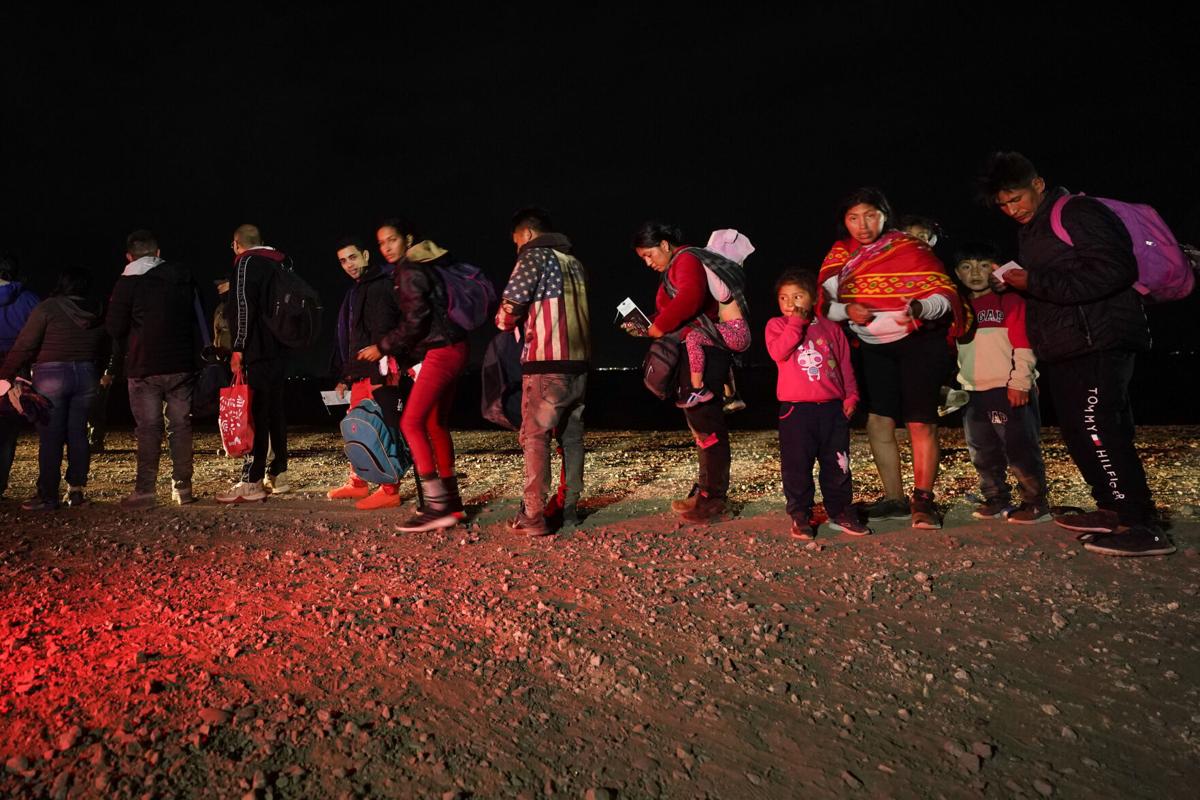Arizona and the nation saw a large drop in migrant apprehensions at the U.S.-Mexico border in January, in large part because of the Biden administration’s new immigration policy.
Border officials encountered migrants at the international border in Arizona nearly 32,800 times in January, a number that had been well above 40,000 since September 2021.
In Arizona, the number of apprehensions fell by nearly 40% from December to January, and nationwide by nearly a third to about 208,000 apprehensions.
January’s update “clearly illustrates that new border enforcement measures are working, with the lowest level of Border Patrol encounters between Ports of Entry since February of 2021,” Customs and Border Protection Acting Commissioner Troy Miller said in a statement. “Those trends have continued into February, with average encounters of Cubans, Haitians, Nicaraguans, and Venezuelans plummeting.”
President Biden announced a decision in October to immediately expel more migrants from Venezuela, under public health policy Title 42, while simultaneously creating more legal pathways for them to enter the country.
He announced an expansion to this policy on Jan. 5, to include migrants from Nicaragua, Cuba and Haiti.
The U.S. could expel 30,000 people from those countries to Mexico a month, and at the same time 30,000 people a month from those countries would be allowed to come into the U.S., but only if they applied for the program before making the trip to the border.
Although the U.S. could expel so many people from the countries in the program, under Title 42, there were only about 6,700 people from Nicaragua, Cuba, Haiti and Venezuela expelled in January.
During January, more than 11,600 Cubans, Haitians, Nicaraguans and Venezuelans, including some immediate family members, were paroled into the country through the new program, a news release said. This process includes careful vetting and requires migrants to have sponsors in the U.S., the release said.
Border officials processed nearly 21,700 migrants at ports of entry under a Title 42 exemption process that was expanded in January and is based on an individual vulnerability assessment.
People can apply for this on the CBP One app. Over 20,000 individuals scheduled an appointment through the app, with the top nationalities being people from Venezuela and Haiti.
In Arizona, the largest drop in apprehensions at the border is of people from Cuba, which in December was on par with apprehensions of people from Mexico. In December border officials apprehended people from Cuba about 12,400 times at the U.S.-Mexico border in Arizona, and in January that number dropped to about 1,500.
The number of people from Nicaragua dropped from about 2,100 to about 290.
Also, the number of apprehensions of migrants from Columbia, Ecuador and Russia each saw declines of more than 1,000, and apprehensions of people from Peru declined by about 3,700.
While apprehensions in the Tucson Sector only dropped by about 2,000 in January, they dropped dramatically in the Yuma Sector, where migrants are more likely to be from farther countries in Central and South America and other parts of the world.
In Yuma, apprehensions fell from about 30,700 in December to 10,900 in January.
President Joe Biden said the U.S. would immediately begin turning away Cubans, Haitians and Nicaraguans who cross the border from Mexico illegally, his boldest move yet to confront the arrivals of migrants that have spiraled since he took office two years ago. The new rules expand on an existing effort to stop Venezuelans attempting to enter the U.S.





